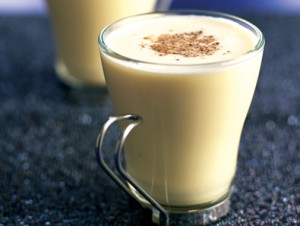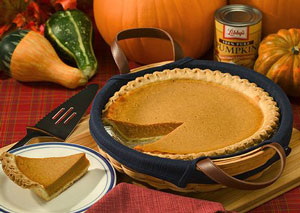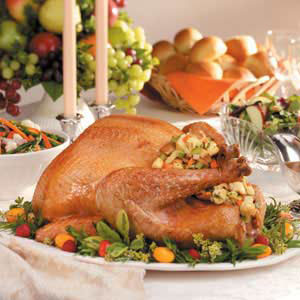
There is one thing that we can all be certain of when it comes to the holidays, and that is the onslaught of a smorgasbord of foods. From Christmas cookies that range from mint to sugar to gingerbread, to a tall glass of eggnog with or without the rum to pumpkin pie and the main course turkey and dressing. Indeed, there is no time like the holidays to reminisce about food from years past, and to decide what will be your favorite holiday treat when December rolls around this year.
Christmas cookie varieties are as diverse as the flavors that each family prefers, but these holiday cookies are a treat that inspires the young and the old equally. Using a variety of holiday cookie cutters, adding frosting and sprinkles, it is an American tradition to bake up a dozen or more of these most popular gingerbread or sugar cookie concoctions.
According to www.foodtimeline.org, cakes of all shapes and sizes have been part of festive holiday rituals long before Christmas began. Christmas cookies, as we know them today, traces its roots to Medieval European recipes, and we can thank both the Dutch, and the German settlers for introducing not only a variety of some of the same cookie cutters we still use today, but also the festive holiday decorations, and cookie flavors we also know and love.
German Lebkuchen, or gingerbread was one of the first cake and cookie concoctions associated with Christmas in America, but it was not long before the introduction of sugar cookies came straight from old English tradition.
“By the 1500s, Christmas cookies had caught on all over Europe. German families baked up pans of Lebkuchen and buttery Spritz cookies. Papparkakor (spicy ginger and black pepper delights), were favorites in Sweden; the Norwegians made krumkake (thin lemon and cardamomscented wafers). The earliest Christmas cookies in America came ashore with the Dutch in the early 1600s,” noted McCall’s Magazine in 1994, in the article, “America’s Best Holiday Cookies.”
As for the gingerbread tradition, Alice Ross notes in a December 2000 article, “A Gingerbread Tradition,” in the Journal of Antiques and Collectables, this spicy treat has been a holiday player for centuries; ever since Medieval Crusaders returned from the Middle East, bringing home would become its essential ingredients — spices, sugars, almonds, and citrus fruits.”
 Coming in a close second in the Christmas tradition category in many households is the chance to drink the once a-year beverage. Good either straight up, or with a choice of rum or whiskey, eggnog is a sweetened dairy made with milk, cream, sugar, beaten eggs, and flavored with just a hint of cinnamon, and nutmeg for good measure. The belief is that eggnog originated in England where a similar drink called posset was popular earlier times. The “nog” part of the name possibly comes from the word “noggin,” a small wooden mug used to serve alcohol in medieval times, which eventually made its way to America, and into our holiday traditions.
Coming in a close second in the Christmas tradition category in many households is the chance to drink the once a-year beverage. Good either straight up, or with a choice of rum or whiskey, eggnog is a sweetened dairy made with milk, cream, sugar, beaten eggs, and flavored with just a hint of cinnamon, and nutmeg for good measure. The belief is that eggnog originated in England where a similar drink called posset was popular earlier times. The “nog” part of the name possibly comes from the word “noggin,” a small wooden mug used to serve alcohol in medieval times, which eventually made its way to America, and into our holiday traditions.
Another popular dessert; the traditional pumpkin pie, which despite the many other popular pies families enjoy during the season, pumpkin just seems to go hand-in-hand with the holidays.  Perhaps this is because of pumpkins’ representation of harvest time when the colder weather heralds the beginning of the holiday season.
Perhaps this is because of pumpkins’ representation of harvest time when the colder weather heralds the beginning of the holiday season.
Check in at the table on Christmas eve or day around many a home, and you won’t be surprised to find almost without question, a traditional turkey and dressing meal complete with all the trimmings like corn, broccoli, squash, potatoes and cranberry sauce. In some cases a duck, goose, or pheasant may replace the turkey, but in many households, no substitution will do even though turkey at Christmas is a fairly new tradition. In fact, before the 1900s, pork was the most common meat for the holiday feast since most people slaughtered their pigs during this time of year.
Along with the turkey there will invariably be either what is called stuffing, or if you live in the south, dressing. Food historians at www.foodtimeline.org, note that the practice of dressing, or stuffing the cavities of fowl and other animals with mixtures of breads, spices, and other chopped items is ancient.
The Romans and the Arabs both did the same thing, but the terms “dressing” and “stuffing,” as relating to more modern cooking is derived from Medieval European practices as noted in the “Oxford Companion to Food” by Alan Davidson.
 While many folks do still stuff the dressing inside the bird as it is cooking, this is not necessary anymore and many holiday cooks just prepare it separately using anything from breadcrumbs to corn bread with onions, celery, and a particular favorite, sage. The main difference between stuffing and dressing is that stuffing usually cooks inside the bird, while dressing cooks separately.
While many folks do still stuff the dressing inside the bird as it is cooking, this is not necessary anymore and many holiday cooks just prepare it separately using anything from breadcrumbs to corn bread with onions, celery, and a particular favorite, sage. The main difference between stuffing and dressing is that stuffing usually cooks inside the bird, while dressing cooks separately.
Whatever your favorite food customs during the holidays, one thing is certainly true; Americans definitely took many food traditions ranging from ancient customs, to recent practices, but all appear to fit perfectly into the holiday food of the 21st Century.
MERRY CHRISTMAS COOKIES
INGREDIENTS:
1/3 cup shortening
1/3 cup sugar
1 egg
2/3 cup honey
1 tsp. lemon flavoring
2-3/4 cups Gold Medal Flour
1 tsp. soda
1 tsp. salt
PREPARATION:
Mix shortening, sugar, egg, honey, and lemon flavoring thoroughly. Measure flour by dipping method or by sifting. Stir together flour, soda, salt; blend in. Chill dough. Heat oven to 375º.
Roll dough out 1/4” thick. Cut into shapes with cookie cutters. Place 1” apart on lightly greased baking sheet. Bake 8 to 10 min., or until no imprint remains when touched lightly. When cool, ice and decorate if desired. Makes about 5 doz. cookies.
Sources:
www.foodtimeline.org
McCall’s Magazine, 1994 article titled “America’s Best Holiday Cookies.”
Journal of Antiques and Collectibles, December 2000 article by Alice Ross titled “A Gingerbread Tradition.”
“Oxford Companion to Food” by Alan Davidson, 1999.
